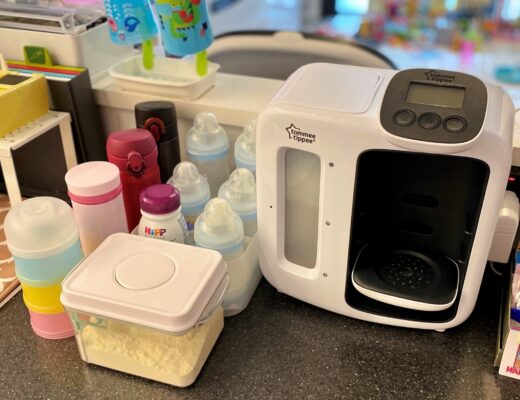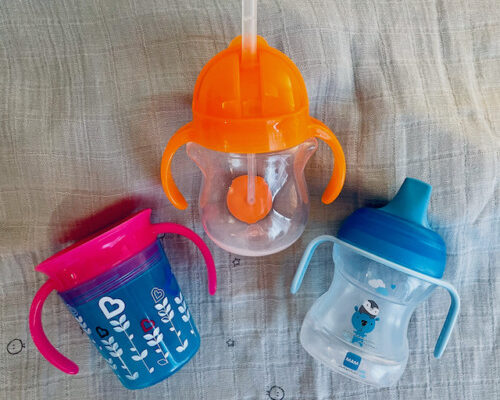Introducing yogurt was one of the first things I did when our baby Jin started weaning. It’s healthy, nutritious and a good habit for all ages!
But finding yogurt for babies and toddlers was a bit of trial and error and a lot of reading the labels!
If you’re wondering which yogurts to try and what’s in them, read on!
Disclaimer: I am not a medical professional or a nutritionist and all opinions are of my own. The information here is based on the UK and sources can be found at the end.
How Early Can Babies Eat Yogurt?
As soon as they’re ready for solids, at around 5-6 months old (we started weaning at 5 months).
Choose a plain, full fat yogurt and follow the usual method of introducing new foods eg. start with a small amount and wait a few days in case of any reaction.
Yogurt is a great weaning food because it’s nutritious, soft and easy to digest.
I also found that cold yogurt helped sooth Jin’s sore gums when he started teething.
But They Say Don’t Give Cows Milk Until After 12 Months?
Correct, because the protein and lactose in cows milk is too strong for baby tums. But the live cultures in yogurt break the protein and lactose down, making it easier to digest, even under 12 months old.
However, if your child shows any sign of a bad reaction (rash, diarrhoea, swelling, coughing), be sure to consult a doctor for allergies.
See more about food allergies in babies here.
How Often Can I Give Yogurt?
It’s fine to eat daily.
When we started weaning at 5 months, plain yogurt was something I wanted to put on the menu at an early age so that Jin would get used to the flavour and make it part of his daily diet.
I started off by giving him a spoon of plain yogurt and gradually built up from there.
We followed each meal with a little yogurt and it became routine.
Once he was a full time eater, yogurt was a regular dessert or snack.
Yogurt Nutrition
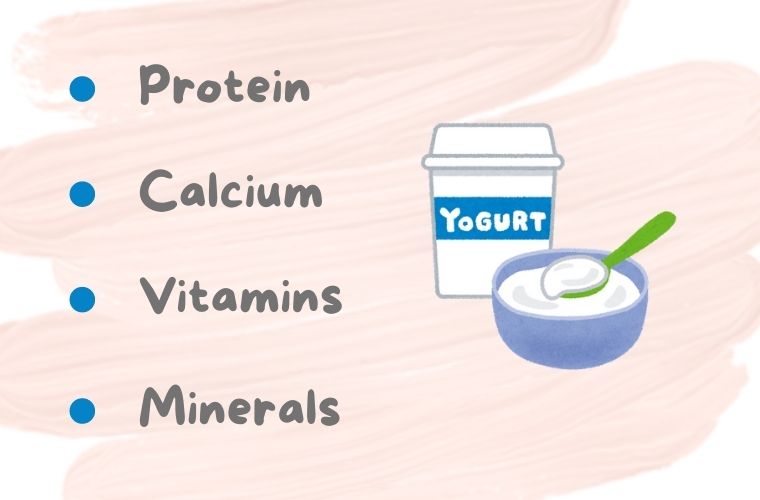
The fact that Jin loves plain, unsweetened yogurt is brilliant because I can give it to him at any time of day as part of breakfast, a snack or dessert.
What’s The Deal With ‘Live Cultures’
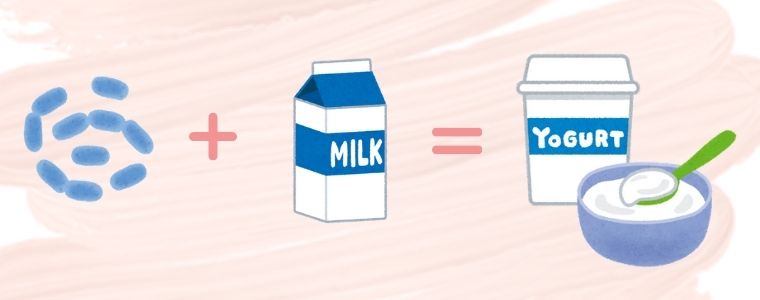
Without going too much into the science, yogurt is basically made by adding live cultures (good bacteria) to milk and fermenting it.
The most common live cultures to initially make yogurt are:
Streptococcus Thermophilus
Lactobacillus Bulgaricus
After this, the yogurt can be put through a heating process to increase the shelf life (for products that contain yogurt) but this kills off the good bacteria.
Others keep the beneficial live cultures and even add further probiotic strains of good bacteria like:
Lactobacillus Acidophilus
Lactobacillus Casei
Bifidobacterium or Bifidus
So technically, all yogurts contain ‘live cultures’ to make the actual yogurt, but check the label to see the end result.
My Top Mild, Plain Yogurts
There’s no specific plain yogurt for babies and toddlers (not that I’ve seen anyway) but ultimately, any plain, full fat yogurt is a great addition to your child’s diet. They can really vary in flavour and texture though and that’s where all the choice comes in.
Having tried various plain yogurts, we found Jin preferred these super mild and creamy ones over the sour ones. But who knows, maybe your little one will like the sour!
Fage Plain Greek Yogurt 5% Fat
Very thick and creamy, almost like ricotta cheese and therefore easy to feed to babies or for them to feed themselves.
Fage is known for its high protein and calcium.
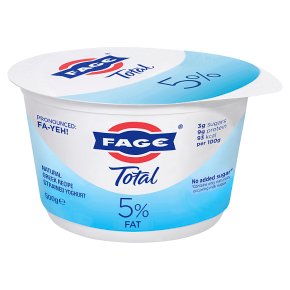
| Per 100g | |
|---|---|
| Energy | 93 kcal |
| Fat | 5g (of which saturates 3.6g) |
| Carbohydrate | 3g (of which sugars 3g) |
| Protein | 9g |
| Salt | 0.1g |
| Cultures | Streptococcus Thermophilus Lactobacillus Bulgaricus Lactobacillus Acidophilus Lactobacillus Casei Bifidobacterium or Bifidus |
Rachel’s Organic Set Greek Yogurt
A very mild flavour, very creamy and it’s set so is easy for Jin to feed himself.
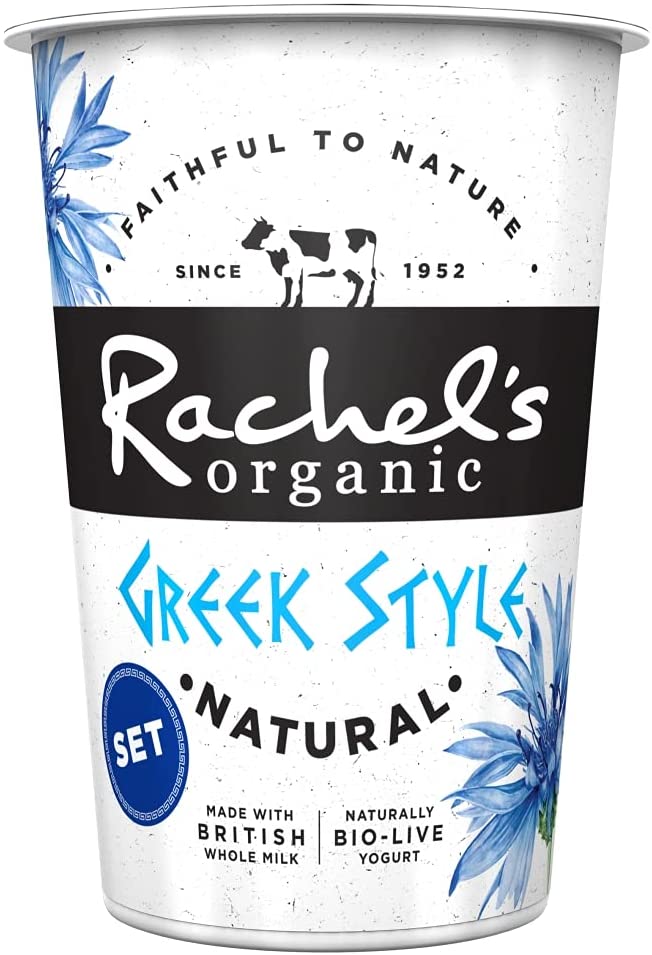
| Per 100g | |
|---|---|
| Energy | 116 kcal |
| Fat | 9g (of which saturates 5.6g) |
| Carbohydrate | 5g (of which sugars 5g) |
| Protein | 3.6g |
| Salt | 0.1g |
| Cultures | Lactobacillus Acidophilus Bifidobacterium or Bifidus |
Onken Set Yogurt
This one also had a nice mild flavour, is set and is slightly lighter than the Rachel’s Organic one.

| Per 100g | |
|---|---|
| Energy | 69 kcal |
| Fat | 3.5g (of which saturates 2.3g) |
| Carbohydrate | 4.6g (of which sugars 4.6g) |
| Protein | 3.8g |
| Salt | 0.17g |
| Live Cultures | Streptococcus Thermophilus Lactobacillus Acidophilus Bifidobacterium or Bifidus |
Flavoured Yogurts – No Added Sugar/Low Sugar
Since becoming a full time eater, Jin had been eating plain yogurt and fruit for dessert daily, so we wanted to introduce some variety for snack time or on-the-go.
Having said that, I’m still being really careful about sugar and want to stay away from added sugar for as long as possible.
Here’s a selection of the products I found with no added sugar (only naturally occurring sugar from the yogurt and fruit) and one option with a very small amount of added sugar.
If you’re looking for subtly flavoured yogurt for babies and toddlers, I highly recommend these ones.
Biotiful Dairy Kefir Slurpy Drink 100ml
A cultured organic dairy drink that comes in Strawberry and Mango flavours.

| Per 100g | |
|---|---|
| Energy | 64 kcal |
| Fat | 2.7g (of which saturates 1.7g) |
| Carbohydrate | 7.2g (of which sugars 5.9g) |
| Protein | 2.9g |
| Salt | 0.1g |
| Live Cultures | Lactobacillus Acidophilus Bifidobacterium Lactobacillus Casei Lactobacillus Plantarum Lactobacillus Rhamnosus |
Danone Kids Pouches 70g
Organic yogurt blended with strawberry and banana purées. A very subtle, barely sweet flavour.
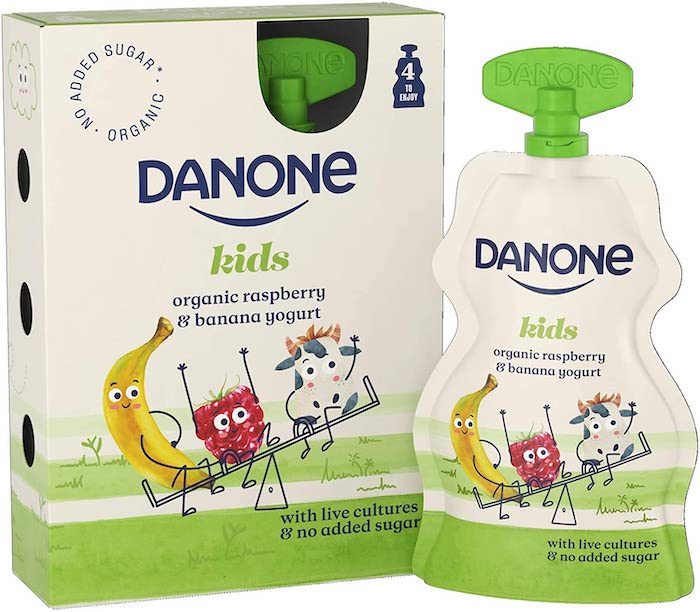
| Per 100g | |
|---|---|
| Energy | 67 kcal |
| Fat | 2.7g (of which saturates 1.7g) |
| Carbohydrate | 5.6g (of which sugars 5.3g) |
| Protein | 4.8g |
| Salt | 0.11g |
| Live Cultures | Streptococcus Thermophilus Lactobacillus Bulgaricus |
Danone Simply Fruit Pots 110g
Plain yogurt with a chunky fruit layer at the bottom.
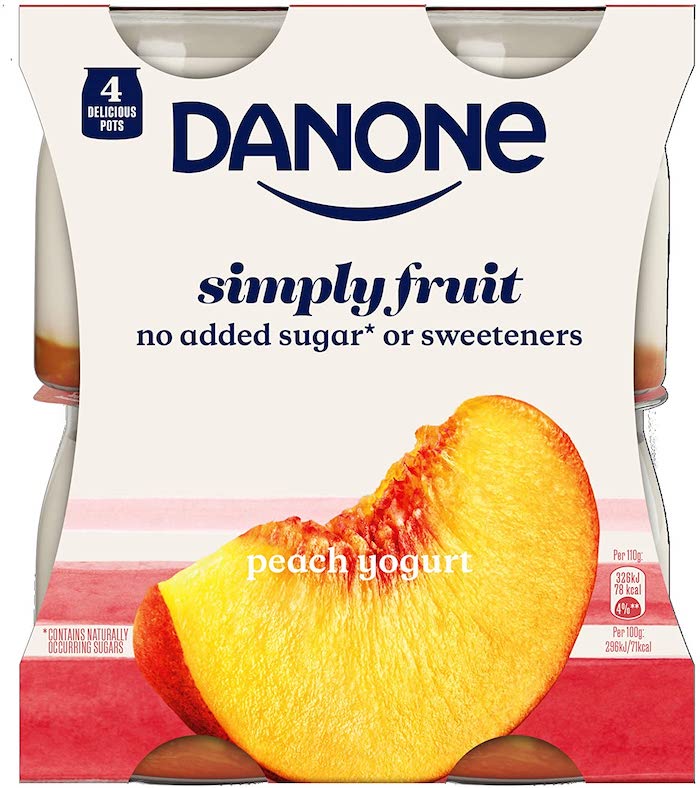
| Per 100g | |
|---|---|
| Energy | 71 kcal |
| Fat | 2.5 (of which saturates 1.7g) |
| Carbohydrate | 7.4g (of which sugars 7.2g) |
| Protein | 4.3g |
| Salt | 0.2g |
| Live Cultures | Streptococcus Thermophilus Lactobacillus Bulgaricus |
Fage Junior Pots 100g
A thick and creamy, almost whipped mousse type yogurt. This does have some added sugar but it’s low and incredibly subtle and mild in flavour. This is as sweet as I go for my toddler for now!

| Per 100g | |
|---|---|
| Energy | 92 kcal |
| Fat | 3.9g (of which saturates 2.8g) |
| Carbohydrate | 7g (of which sugars 6.3g) |
| Protein | 7.2g |
| Salt | 0.1g |
| Live Cultures | Streptococcus Thermophilus Lactobacillus Bulgaricus Lactobacillus Acidophilus Lactobacillus Casei Bifidobacterium or Bifidus |
Using Yogurt in Cooking/Baking
There are so many other uses for yogurt but I’ll write about that another time. ![]()
Try adding a dollop of any of these plain yogurts to your baby/toddler’s meal like my 3 Spice Curry and Japanese Curry.
Final Thoughts
So there we have it, mine and Jin’s selection of plain and flavoured yogurt for babies and toddlers.
If I had to choose one from each category, it would be:
Plain
Fage 5% because it’s so high in protein and has those extra handful of live cultures.
Flavoured
Danone Kids Pouches because it’s high in protein, low in natural sugars and has such a subtle flavour, not to mention the convenience of the pouch!
I hope you find the right yogurt for your little one and let me know if they have a favourite yogurt in the comments below!
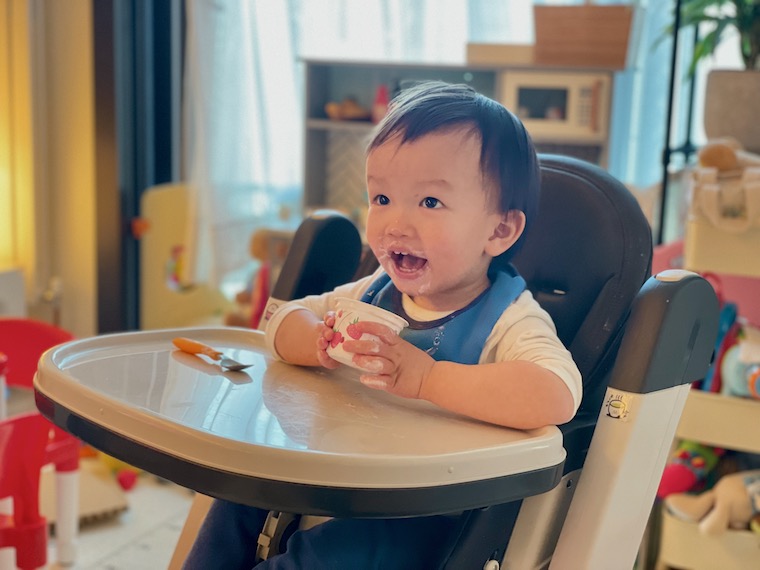
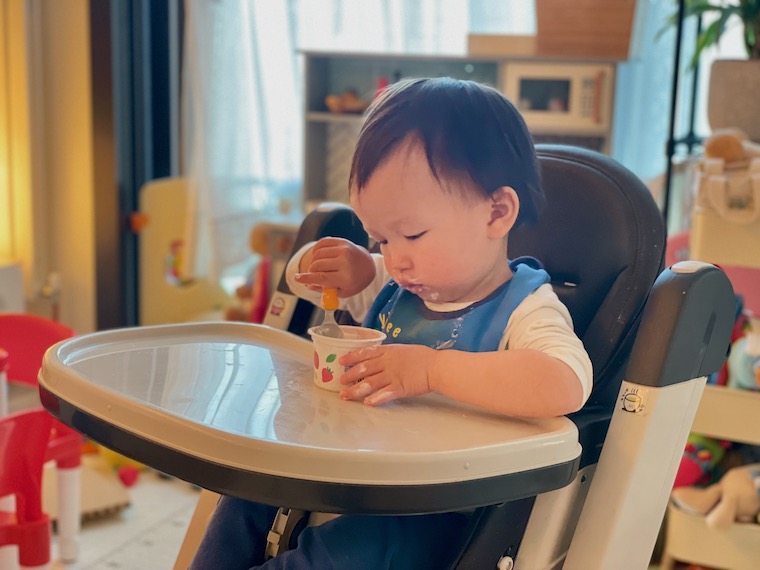
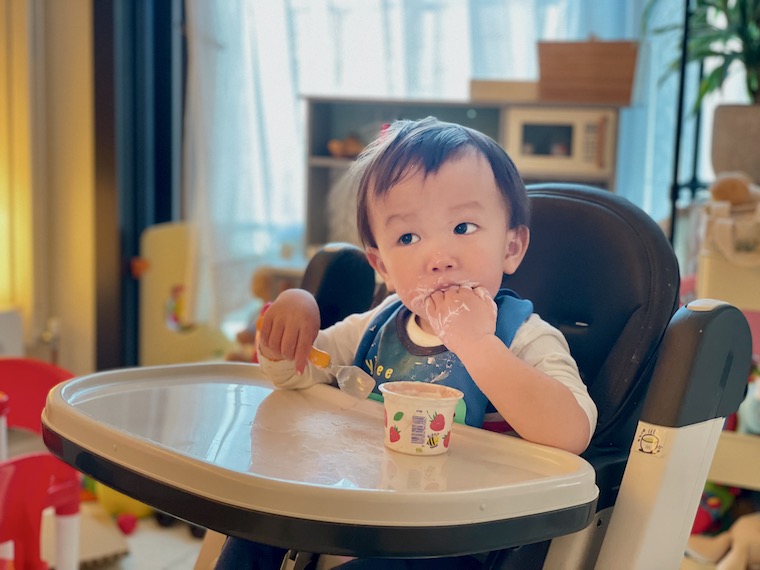
Information Sources:
NHS – Baby’s First Solid Foods
Baby Centre – Cows Milk When And How To Introduce It
Yeo Valley – First Foods For Feeding Your Baby
Wikipedia – Yogurt
Live Strong – Does Heating Yogurt Kill Good Bacteria


